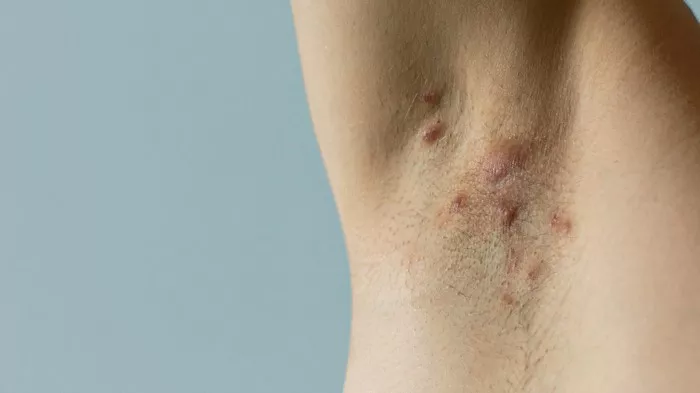Hidradenitis suppurativa (HS) is a chronic inflammatory skin condition characterized by painful nodules, abscesses, and tunnels under the skin, primarily in areas rich in apocrine glands such as the armpits, groin, and buttocks. It progresses through several stages, with Stage 1 being the earliest and least severe. Despite its relatively mild presentation in this stage, Stage 1 HS can still significantly impact an individual’s quality of life. Understanding its symptoms, diagnosis, and treatment options is crucial for effective management and improving patient outcomes.
Symptoms of Stage 1 HS
Stage 1 HS typically manifests as recurrent, tender, red bumps in the affected areas. These bumps may resemble boils or pimples and can be mistaken for other skin conditions initially. However, what sets Stage 1 HS apart is the tendency for these lesions to recur in the same areas over time. While the lesions may be smaller and less frequent compared to later stages of HS, they can still cause discomfort and irritation for individuals affected by the condition.
Other common symptoms of Stage 1 HS include itching, burning, and the development of small tunnels or tracts under the skin known as sinus tracts. These sinus tracts can sometimes leak pus or other fluids and may be associated with a foul odor. Despite the discomfort they cause, these symptoms may not always be severe enough to prompt individuals to seek medical attention immediately, leading to delays in diagnosis and treatment.
Diagnosis of Stage 1 HS
Diagnosing Stage 1 HS can be challenging due to its variable presentation and similarity to other skin conditions such as folliculitis or acne. A thorough medical history and physical examination are essential for accurate diagnosis. During the examination, healthcare providers may look for characteristic signs of HS, such as the presence of recurrent, painful nodules or abscesses in the typical areas of involvement.
In some cases, healthcare providers may perform additional tests to rule out other potential causes of the symptoms, such as bacterial cultures or skin biopsies. Imaging studies such as ultrasound or MRI may also be used to evaluate the extent of the disease and identify any underlying sinus tracts or abscesses.
Treatment Options for Stage 1 HS
Early intervention is key to managing Stage 1 HS and preventing disease progression. While there is no cure for HS, various treatment options are available to help alleviate symptoms and reduce the frequency of flare-ups. The choice of treatment depends on the severity of the symptoms, the extent of the disease, and individual patient preferences.
1. Topical Treatments:
In mild cases of Stage 1 HS, topical treatments such as antibiotics, corticosteroids, or retinoids may be prescribed to reduce inflammation and prevent infection. These medications are typically applied directly to the affected areas and can help alleviate pain and discomfort associated with the lesions.
2. Lifestyle Modifications:
Making certain lifestyle changes can also help manage Stage 1 HS and reduce the risk of flare-ups. This may include maintaining good hygiene practices, avoiding tight-fitting clothing that can irritate the skin, and maintaining a healthy weight through diet and exercise.
3. Systemic Therapies:
In more severe cases or when topical treatments are ineffective, systemic therapies such as oral antibiotics, hormonal therapy, or biologic medications may be recommended. These medications work by targeting the underlying inflammatory processes involved in HS and can help reduce the frequency and severity of flare-ups.
4. Surgical Interventions:
In some cases, surgical intervention may be necessary to drain abscesses, remove scar tissue, or excise severely affected areas of skin. Surgical procedures such as incision and drainage, laser therapy, or wide local excision may be performed either alone or in combination with other treatment modalities to achieve optimal outcomes.
Conclusion
Stage 1 Hidradenitis Suppurativa may present with relatively mild symptoms compared to later stages of the disease, but it can still have a significant impact on an individual’s quality of life. Early recognition and diagnosis are crucial for effective management and preventing disease progression. By understanding the symptoms, diagnosis, and treatment options for Stage 1 HS, healthcare providers can better support patients in managing their condition and improving their overall well-being. Ongoing research into the underlying mechanisms of HS and the development of novel therapeutic approaches offer hope for better outcomes for individuals affected by this challenging condition.
























